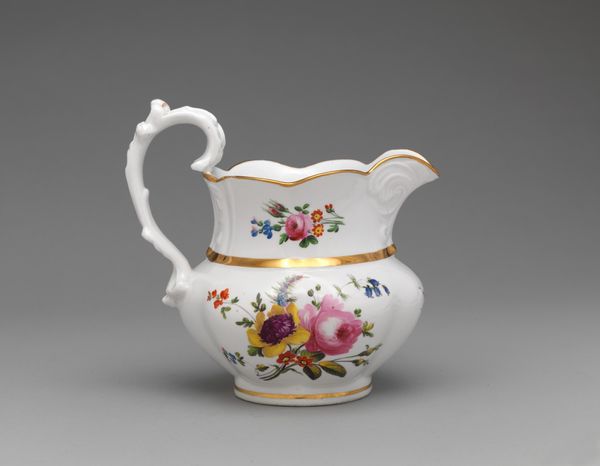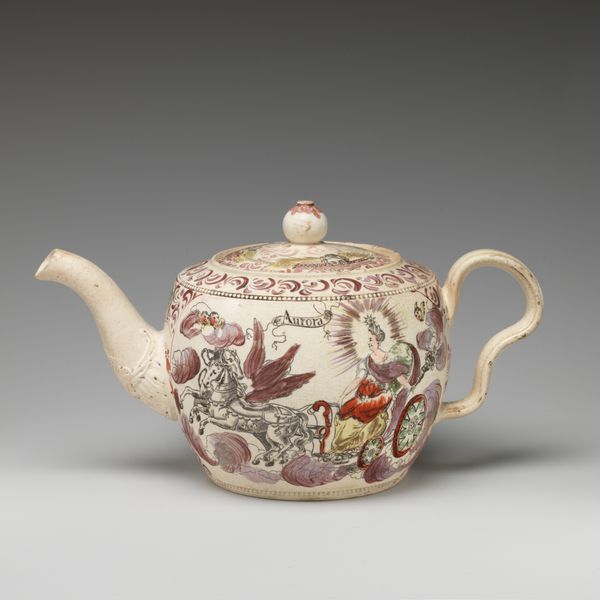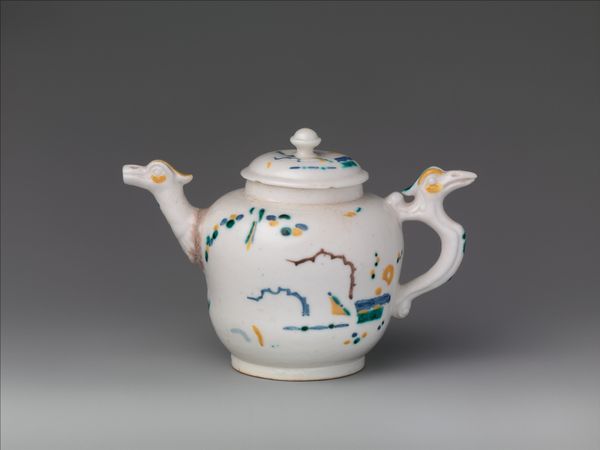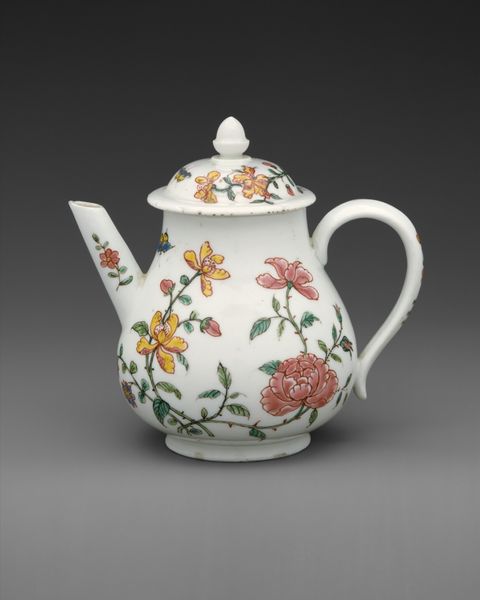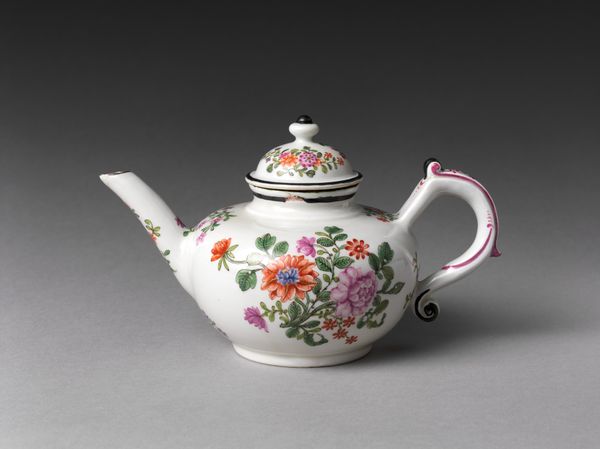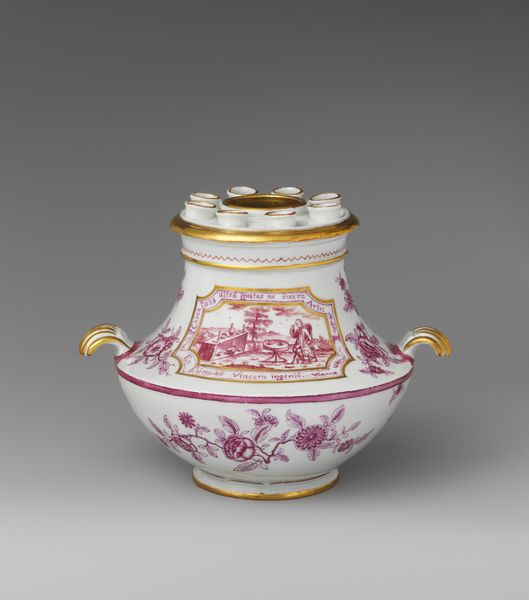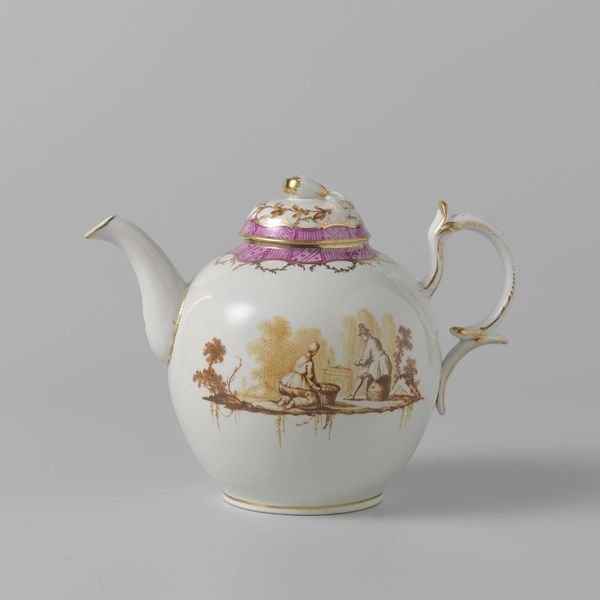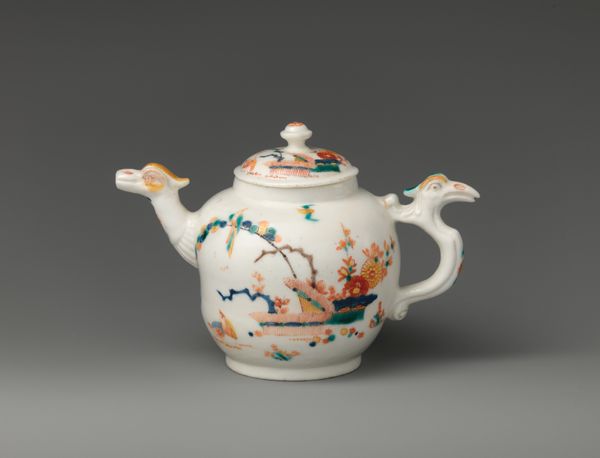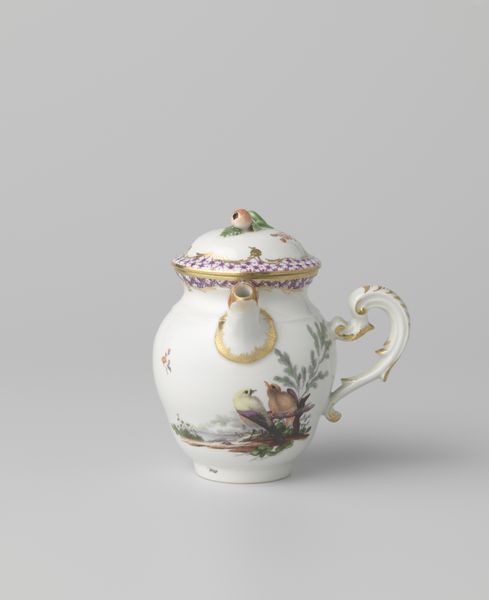
ceramic, porcelain, sculpture
#
baroque
#
ceramic
#
porcelain
#
sculpture
#
ceramic
#
decorative-art
#
rococo
Dimensions: H. 4-3/4 in. (12.1 cm.)
Copyright: Public Domain
Curator: Isn't it amazing? This Rococo-style porcelain teapot, crafted sometime between 1730 and 1745, just hums with a playful elegance. Editor: Playful is one word for it. I immediately see echoes of courtly ritual and trade routes paved by exploitation. Tea, in this context, becomes less about a soothing brew and more about a symbol of power, wouldn’t you agree? Curator: Oh, absolutely. There's always a shadow. But look at those hand-painted floral designs, all flowing lines and vibrant colours. It makes me think of secret gardens and whispered confidences. I love the almost cartoonish dragon details where you expect to grab the handle. Do you think those dragons even knew they’d become handles? I wonder about their tea preferences, their origin stories. Editor: The floral patterns themselves weren't innocent imports, were they? European powers projected idealized fantasies onto the East, plundering cultural motifs and refashioning them to suit colonial narratives. How complicit were the artisans who hand-painted these images on the porcelain? Curator: Perhaps the artisans added in their own little jokes, subverting expectations on the sly. The handle almost looks like an ancient Greek form to me; what could this strange juxtaposition mean? We can speculate. It’s all delightful. It has lived! Editor: Indeed, material culture carries inherent ambiguities. Objects survive historical contexts, don’t they? What do these material conditions of survival say about the communities whose labour was involved and about what survives the extraction from those conditions. How should the object bear these realities? Curator: Beautifully said. But there’s an enduring quality about this object; even knowing the difficult context you are pointing out, the aesthetic still sparkles for me, regardless, you know? Almost… transcendent. Like a stubborn weed pushing its way through cracked pavement. It’s all connected, all one messy, gorgeous thing. Editor: That messiness is the key. Perhaps by acknowledging the historical grime clinging to every delicate detail, we can resist the trap of fetishizing the object and open ourselves up to critical conversations about our relationship to art and history.
Comments
No comments
Be the first to comment and join the conversation on the ultimate creative platform.
